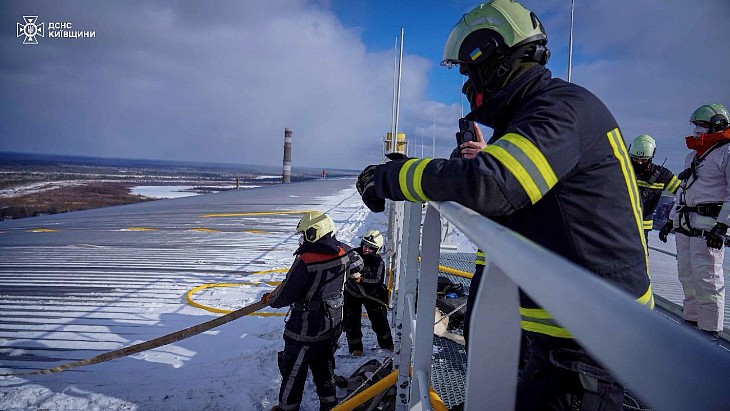IAEA mission reaffirms safety of Fukushima water release
.jpg)
At the site, contaminated water - in part used to cool melted nuclear fuel - is treated by the Advanced Liquid Processing System (ALPS), which removes most of the radioactive contamination, with the exception of tritium. This treated water is currently stored in about 1000 tanks on site.
Japan announced in April 2021 it planned to discharge treated water stored at the site into the sea over a period of about 30 years, and asked the IAEA to review its plans against IAEA safety standards. An IAEA Task Force was established to implement the assistance to Japan, which included advice from a group of internationally recognised experts from Member States, including members from the region, under the authority of the IAEA Secretariat.
Japan started to discharge the water on 24 August 2023 and has so far completed the release of three batches, a total of 23,400 cubic metres of water.
The latest report covers the IAEA review mission conducted from 24-27 October last year to follow up on the findings from the IAEA's Comprehensive Report on the Safety Review, published in July 2023. That report - issued before the discharge began - found Japan's plan for handling the treated water to be consistent with international safety standards and that the discharge as planned would have a negligible radiological impact to people and the environment.
During the latest mission, the Task Force reviewed the facilities and equipment installed at the Fukushima Daiichi plant to discharge the ALPS-treated water. It also met with Tokyo Electric Power Company (Tepco), the operator of the plant, Japan's Ministry of Economy, Trade and Industry and the Nuclear Regulation Authority.
Based on their assessments, the Task Force said the mission "did not identify anything that is inconsistent with the requirements in the relevant international safety standards" and therefore "reaffirmed the conclusions from the Agency's comprehensive safety report issued on 4 July last year".
The team also concluded: a robust regulatory infrastructure is in place in Japan to provide operational safety oversight of the discharge of ALPS-treated water; the equipment and facilities at Fukushima Daiichi are installed and operated in a manner that is consistent with Japan's plan for the release of the water and the relevant international safety standards; and optimisation of protection - that is the process to determine the level of protection and safety for individuals - needs to be considered as part of the overall decommissioning of the Fukushima Daiichi site. However, the Task Force fully recognised that the discharges are in the early stages and that further time and operational experience are required before progress can be made on this issue.
The next review mission to Fukushima Daiichi is anticipated to take place in the Spring of 2024.
Separately, the IAEA also issued two reports prepared as part of its safety review of the water discharge detailing the latest findings of its ongoing corroboration of the measurement data underpinning Japan's plan for the discharge of the ALPS treated water.
The first report describes an interlaboratory comparison (ILC) that assessed Tepco's capabilities for accurate and precise measurements of the radionuclides present in the treated water stored on site. Water samples were taken in October 2022 from two tanks at Fukushima Daiichi. In the second report, the IAEA details an ILC of radionuclides analyses in samples of seawater, sediment, fish and seaweed taken in November 2022 from offshore locations and a fish market close to the site.



_49215.jpg)





_66488.jpg)


